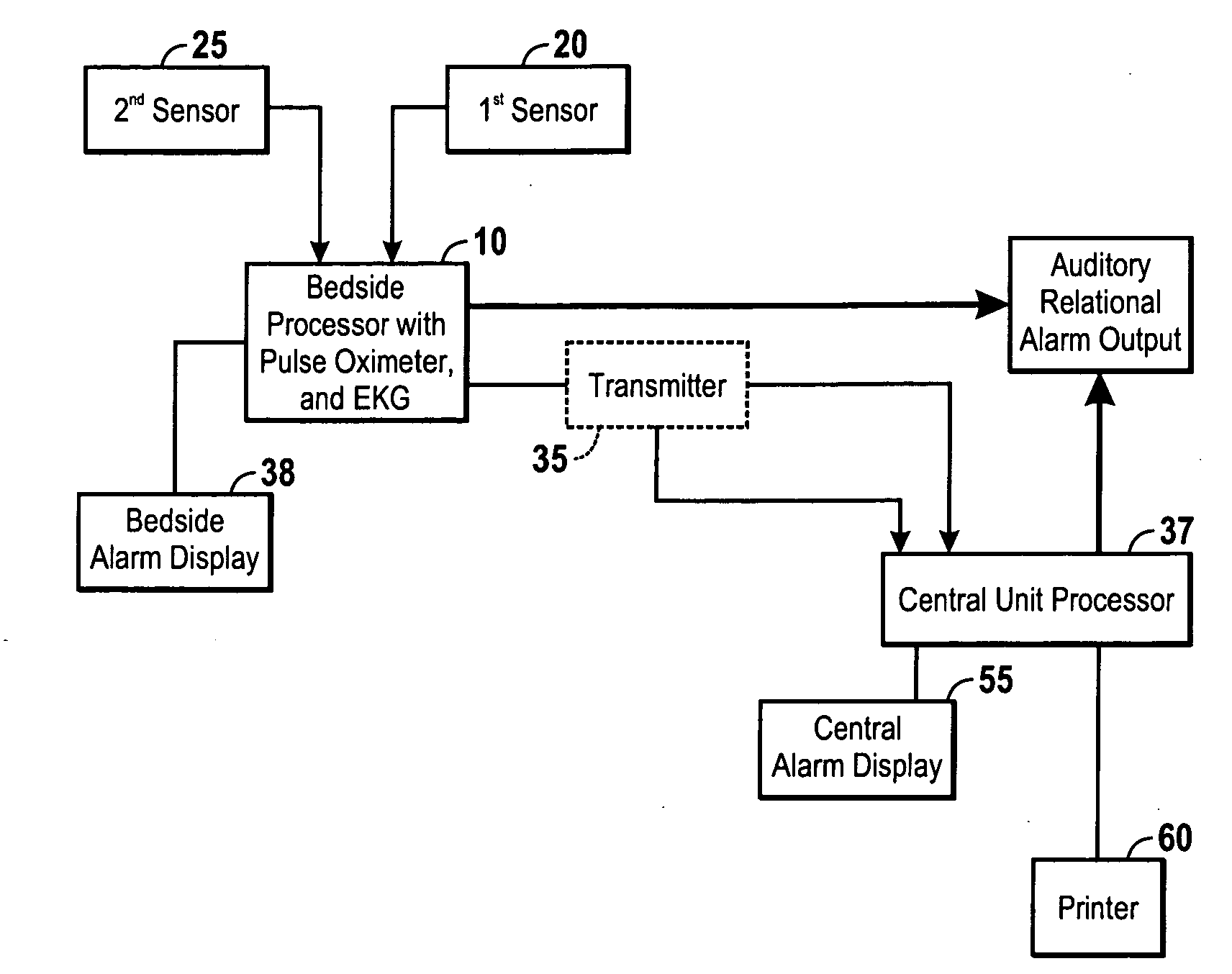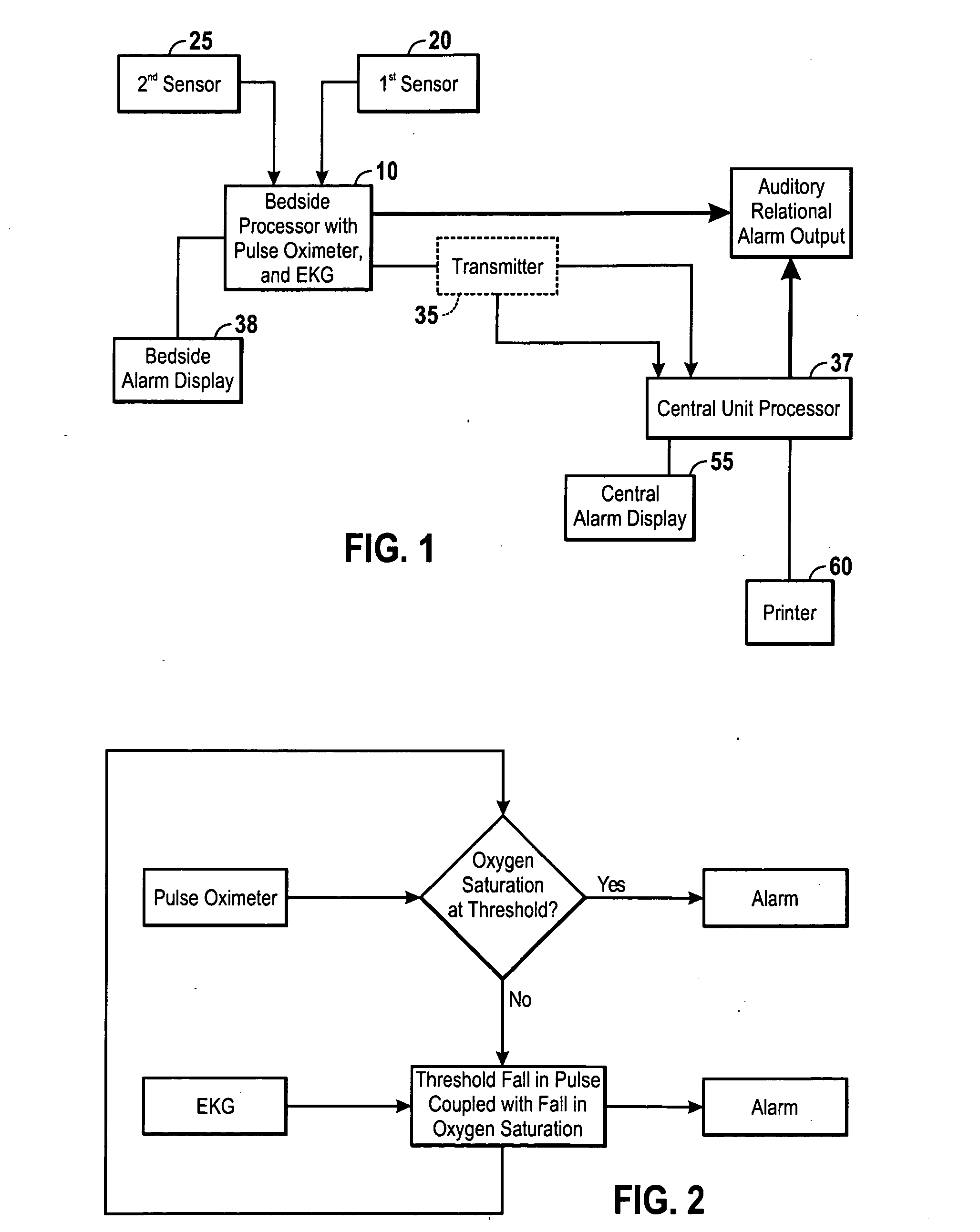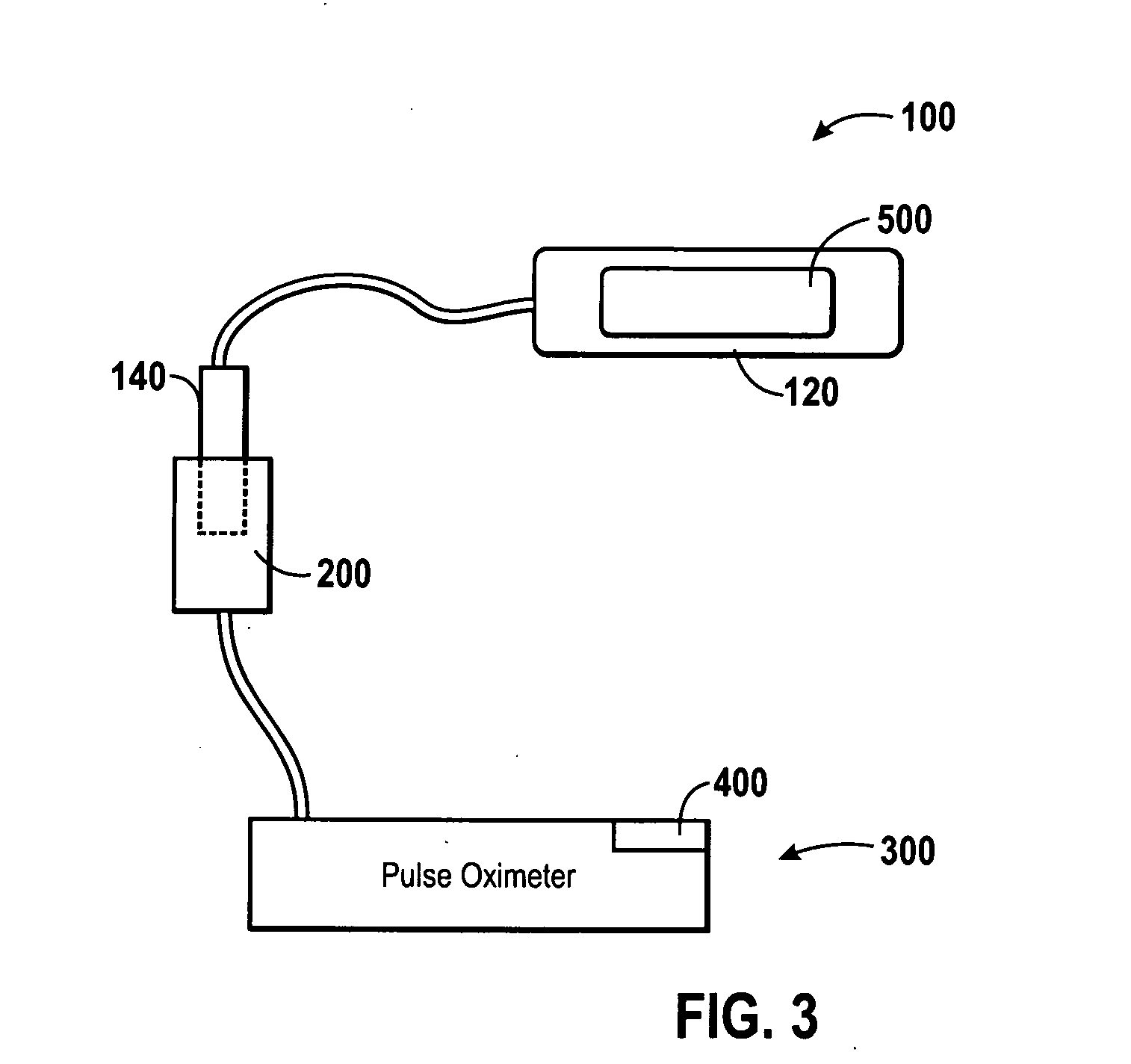Pulse oximetry relational alarm system for early recognition of instability and catastrophic occurrences
a relational alarm and oximetry technology, applied in the field of alarm systems for oximetry, can solve the problems of very low success rate very common issue of delay in recognition of respiratory instability and/or arrest, shortness of breath, etc., and achieve the effect of improving early warning characteristics, features, and functionality
- Summary
- Abstract
- Description
- Claims
- Application Information
AI Technical Summary
Benefits of technology
Problems solved by technology
Method used
Image
Examples
Embodiment Construction
[0030]FIG. 1 shows a relational alarm system for real time detection of a broad range of patterns and instabilities (as described in the aforementioned co pending patent application). The system may include a portable bedside monitor 10, which may incorporate a pulse oximeter having at least a first sensor 20 and a electrocardiogram or other monitor including at least a second sensor 25. The system may include a transmitter 35 to a central processing unit 37. The bedside processor 10 may include an output screen 38, which provides the nurse with a bedside indication of the sensor output. The central unit 37 may include an output screen 55 and printer 60 for generating a hard copy for physician interpretation. The system may provide recognition and alarm of catastrophic occurrences based on analysis of relational outputs of a plurality of time series thereby allowing recognition of respiratory arrest, airway instability, and complications related to such instability, and pathophysiol...
PUM
 Login to View More
Login to View More Abstract
Description
Claims
Application Information
 Login to View More
Login to View More - R&D
- Intellectual Property
- Life Sciences
- Materials
- Tech Scout
- Unparalleled Data Quality
- Higher Quality Content
- 60% Fewer Hallucinations
Browse by: Latest US Patents, China's latest patents, Technical Efficacy Thesaurus, Application Domain, Technology Topic, Popular Technical Reports.
© 2025 PatSnap. All rights reserved.Legal|Privacy policy|Modern Slavery Act Transparency Statement|Sitemap|About US| Contact US: help@patsnap.com



